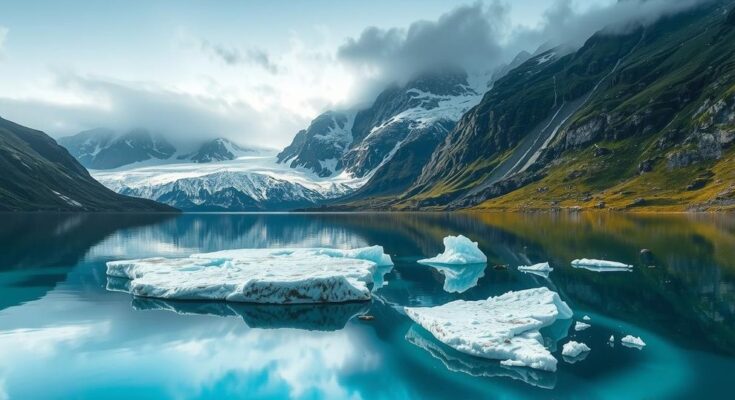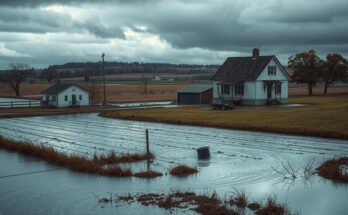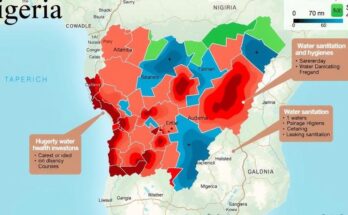Colombia experiences drastic glacier loss, with six glaciers remaining, primarily in the Sierra Nevada del Cocuy. Local communities depend intricately on these glaciers for water. As climate change accelerates the glaciers’ retreat, researchers warn of impending water crises and environmental degradation, leading to urgent calls for sustainable practices and increased awareness.
In the Sierra Nevada del Cocuy, Colombia, at an altitude of 4,200 meters, Edilsa Ibañéz Ibañéz, a local guide, reflects on the changing glaciers she grew up with. Once believed to be eternal, these glaciers have substantially diminished, with over 90% of their ice lost since the late 19th century. Now, only six glaciers remain in Colombia, with the Sierra Nevada del Cocuy harboring approximately 36% of the country’s total glacial area.
The visible effects of climate change are stark in the Sierra Nevada, where dry rock surfaces are emerging where snow once flourished. Limestone markers on trails, akin to gravestones, chart the former snow line, revealing alarming retreat. The famed Cóncavo peak now features fraying ice formations, while the glacier itself emits ominous cracking sounds as it succumbs to rising temperatures.
The decline of Colombia’s glaciers is mirrored across the globe, as the country struggles against rising temperatures and erratic weather. Venezuela has already lost all its glaciers, raising concerns that Colombia’s glaciers may vanish within the forthcoming three decades. As Mathias Vuille, a climate scientist, remarks, the glaciers are “doomed” without fresh snow and ice to replenish them.
Santa Isabel, located in Los Nevados National Park, is projected to be the first glacier to disappear, potentially within five years. Longtime visitor Matteo Giraldo expresses deep sorrow at witnessing this rapid transformation. The rapid melting of glaciers poses significant threats to communities in high-altitude areas, where glaciers serve as crucial water reservoirs, sustaining local populations.
The Sierra Nevada del Cocuy contains enough water, equivalent to 256,000 Olympic swimming pools, making it vital for surrounding communities. Edilsa Ibañéz Ibañéz fears for her community’s future water supply. Her brother, Hernando, emphasizes the critical dependency of 250 families on a single aqueduct that he predicts will soon run dry due to glacier loss.
The accelerating disappearance of glaciers highlights a broader environmental crisis that heavily impacts Colombia’s water resources. Following severe drought, Bogotá has implemented water rationing measures, creating awareness of the nation’s dwindling supplies. Colombia’s unique páramo ecosystems, which play a vital water retention role, are also under threat from climate change and human activities, further exacerbating the water crisis.
Glaciers are sounding an alarm about extensive environmental changes, as researchers like Jorge Luis Ceballos work to comprehend their decline. While the loss of glaciers remains certain, the effects on regional páramos remain uncertain. For communities like Doris Ibañéz Cristancho’s, enduring attachments to the glacial landscape evoke feelings of nostalgia and impending loss as visible reminders of the glaciers fade.
Colombia is facing an alarming future without glaciers, which play a critical role in sustaining water supplies for high-altitude communities. Scientific evidence underscores the urgency of addressing climate change to mitigate further loss of these vital ice formations. As local populations grapple with water scarcity, the situation beckons for immediate action to preserve ecosystems that are integral to their heritage and survival.
Original Source: www.theguardian.com




